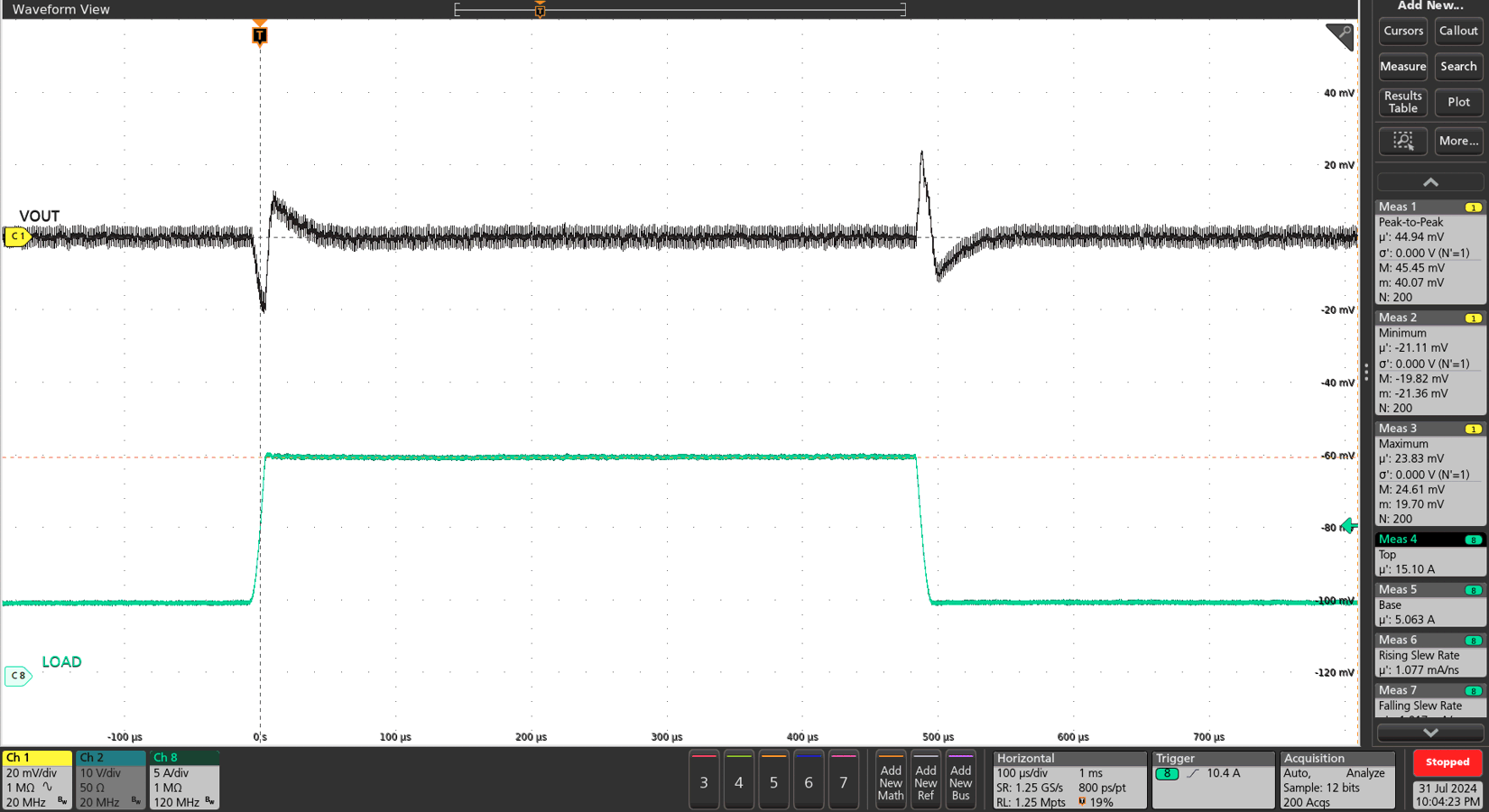SLVUCX1 September 2024 TPS548B23
3.1.4 Load Transient and Loop Response
The response to load transients for both designs is shown in Figure 3-5 and Figure 3-6. The current step is from 5A to 15A and the current step slew rate is 1A/µs. An electronic load is used to provide a DC 5A load and the load transient circuit on the EVM is used to provide a 10A step. The VOUT voltage is measured using TP10.
shows the loop characteristics. Gain and phase plots are shown for VIN voltage of 12V and a 20A load.
 Figure 3-5 Transient Response
Figure 3-5 Transient Response Figure 3-6 Bode
Plot – 10A Load
Figure 3-6 Bode
Plot – 10A Load